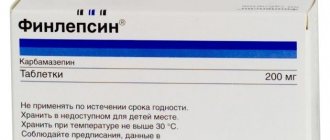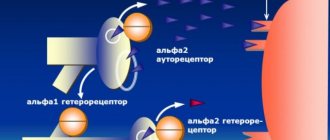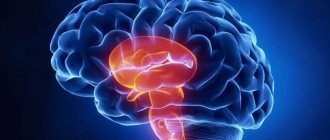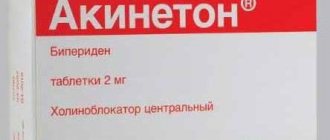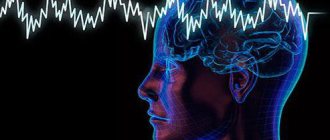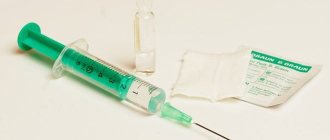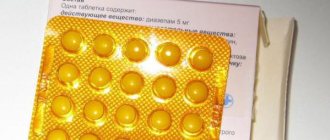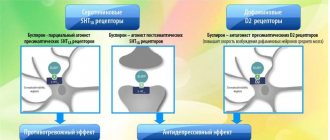The pharmaceutical industry produces several anticonvulsant medications. These include Finlepsin (or Finlepsin retard - a type of the first drug). In addition to the anticonvulsant effect, these drugs are used for mental illnesses that are accompanied by a state of increased anxiety.
The pharmaceutical industry produces several anticonvulsant medications, these include Finlepsin and Finlepsin retard.
Characteristics of Finlepsin
The manufacturer offers the medicine in the form of tablets containing 200 mg of carbamazepine as the active ingredient. This substance affects brain cells, suppressing the occurrence of nerve impulses. Due to this, Finlepsin provides the following therapeutic effects:
- anticonvulsant, including for epilepsy;
- antimanic, reducing anxiety, irritability, and symptoms of depression;
- pain reliever for inflammation of various structures of the nervous system, for example, neuritis.
The drug is also prescribed for convulsive readiness caused by withdrawal syndrome, the cause of which is chronic alcoholism.
Finlepsin is indicated for the following diseases:
- epilepsy, including its mixed forms;
- epileptiform convulsions that appear with multiple sclerosis, paresthesia, diarthria and other pathologies;
- pain syndrome due to neuritis and lesions of peripheral nerves, including those provoked by diabetes mellitus;
- neuralgia of unknown origin;
- psychotic disorders, including those caused by intoxication of the body;
- as part of complex treatment of withdrawal syndrome.
The medicine has many contraindications, so it cannot be used without a doctor’s prescription. Among the body conditions for which the use of Finlepsin is not recommended are hematopoietic disorders, atrioventricular block, porphyria, and individual intolerance to the components of the drug.
During treatment with Finlepsin, it is possible to develop negative reactions from the digestive, nervous, cardiovascular, endocrine, genitourinary systems, musculoskeletal system, sensory organs and hematopoiesis. The list of side effects is long. If any negative signs appear, you should stop taking the pills and consult a doctor.
Finlepsin is not recommended for use if there is a disorder of hematopoiesis, atrioventricular block, porphyria, or individual intolerance to the components of the drug.
Features of the action
The medicine is prescribed for the treatment of seizures caused by epilepsy or alcoholism.
Since the drug helps normalize water balance, it can be prescribed in addition to complex therapy for diabetes insipidus.
In addition, Earbamazepine, which is part of Finlepsin-200, has an antimanic effect, which determines the effectiveness of the drug in the treatment of the following conditions:
- psychoses;
- chorea;
- alcoholism;
- progressive dementia;
- depressive states;
- schizophrenia.
In drug treatment clinics, the drug is prescribed for the treatment of alcohol withdrawal syndrome and drug addiction. However, such treatment should only be carried out in a hospital under the supervision of medical personnel, since people with drug addiction show rapid addiction to the active substance, which can cause low effectiveness of therapy.
Characteristics of Finlepsin retard
The active component of the drug is carbamazepine in dosages of 200 and 400 mg. Dosage form: tablets.
Finlepsin retard is prescribed for:
- epileptic seizures;
- epileptiform seizures that develop against the background of multiple sclerosis;
- paresthesia and pain syndrome;
- tonic convulsions;
- neuralgia of various origins;
- pain accompanying diseases of the peripheral nervous system and diabetes;
- withdrawal syndrome developing against the background of chronic alcoholism;
- psychoses and affective disorders.
The drug is contraindicated in case of porphyria, hematopoietic disorders, atrioventricular block, hypersensitivity to the components of the drug. The medicine is not prescribed for children under 6 years of age.
Taking Finlepsin retard causes many side effects. Among them are nausea, vomiting, drowsiness, disorientation, vision problems, dyskinesia, abnormal heart rhythm, respiratory depression, etc. If unpleasant symptoms appear, the patient should stop treatment and consult a doctor.
Side effects
It is clear that such a strong and serious drug as Finlepsin Retard will have an extensive list of side effects. How can they be expressed?
According to reviews, the most common unpleasant symptoms that accompany taking the medication are headaches, body weakness, dizziness, and a constant desire to sleep.
Less commonly, the patient may be bothered by involuntary movements such as tics or tremors. Sometimes people experience side effects such as depression, aggression, loss of appetite, psychosis, muscle weakness and even paresis.
Patients also quite often complain of allergic reactions that accompany taking carbamazepine, such as urticaria or skin rash. “Finlepsin Retard” can have a negative effect on the hematopoietic organs, causing the development of leukopenia, eosinophilia, anemia, and so on.
Other unpleasant symptoms during treatment with the drug may be nausea and dry mouth, vomiting, diarrhea or constipation, and abdominal pain. In addition, the drug can negatively affect the liver, triggering the development of such serious ailments as pancreatitis, hepatitis and others.
It is quite rare to hear complaints about the cardiovascular system during treatment with the drug. Still, unpleasant symptoms may occur. In this case, they will manifest themselves in arrhythmia, increased or decreased pressure, worsening (or even development) of heart failure, thrombophlebitis.
Quite often, taking the drug is accompanied by edema, weight gain, as well as various disorders in various metabolic processes of the body.
What else do patients taking Finlepsin Retard complain about? Very rarely, taking the drug is accompanied by disorders in the genitourinary system, which can lead to nephritis, kidney failure, decreased potency, urinary retention, or, conversely, frequent urination.
Sometimes side effects manifest themselves in taste disturbances, tinnitus, and visual disturbances.
You should also know that taking the drug affects laboratory blood values. Therefore, during the treatment process it is necessary to regularly undergo the necessary tests.
The symptoms listed above may be an indicator of a drug overdose. In this case, you need to contact a specialist.
Comparison of drugs
The medications are similar in most respects, but have some differences.
Similarities
The drugs contain the same active ingredient and have the same indications for use. They are not recommended for use in the same physiological and pathological conditions of the body. Possible side effects caused by medications are also similar.
Medicines are produced by one manufacturer - transatlantic. Both medications are available with a doctor's prescription.
What is the difference?
Finlepsin retard differs from its predecessor in its prolonged action. Once in the body, its components are released gradually, due to which the concentration of medicinal substances is maintained for a longer time. This also affects side effects - the risk of their occurrence is reduced.
Finlepsin retard causes many side effects, including nausea, vomiting, drowsiness, disorientation, and vision problems.
Which is cheaper?
Finlepsin is cheaper. A package of 50 tablets sells for about 150 rubles. The cost of Finlepsin retard is about 200 rubles. (dosage 200 mg) and 300 rub. (dosage 400 mg).
Pharmacokinetics
Suction
When taking the drug orally, carbamazepine is slowly but almost completely absorbed from the gastrointestinal tract (food intake does not significantly affect the rate and extent of absorption).
After a single dose of 400 mg, Cmax is reached after 32 hours and averages about 2.5 mcg/ml.
Distribution
Css in plasma is achieved after 1-2 weeks of constant use (the rate of achievement depends on the individual characteristics of metabolism: autoinduction of liver enzyme systems, heteroinduction by other concomitantly used drugs, as well as on the patient’s condition, the dose of the drug and the duration of treatment). There are significant interindividual differences in the Css value in the therapeutic range: in most patients these values range from 4 to 12 μg/ml (17-50 μmol/l). Concentrations of carbamazepine-10,11-epoxide (a pharmacologically active metabolite) are approximately 30% of those of carbamazepine.
Plasma protein binding in children is 55-59%, in adults - 70-80%. Apparent Vd - 0.8-1.9 l/kg. In the cerebrospinal fluid and saliva, concentrations are created proportional to the amount of active substance not bound to proteins (20-30%). Penetrates the placental barrier and is excreted in breast milk (the concentration is 25-60% of that in blood plasma).
Metabolism
Metabolized in the liver, mainly along the epoxide pathway, with the formation of the main metabolites: active - carbamazepine-10,11-epoxide and inactive conjugate with glucuronic acid. The main isoenzyme that ensures the biotransformation of carbamazepine into carbamazepine-10,11-epoxide is isoenzyme 3A4 of cytochrome P450. As a result of these metabolic reactions, a low-active metabolite, 9-hydroxy-methyl-10-carbamoylacridan, is also formed. Carbamazepine can induce its own metabolism.
Removal
T1/2 after a single oral dose is 60-100 hours (on average about 70 hours); with prolonged use, T1/2 decreases due to autoinduction of liver enzyme systems. After a single oral dose, 72% of the dose taken is excreted in the urine and 28% in feces; while about 2% are excreted in the urine in the form of unchanged carbamazepine, about 1% - in the form of a 10,11-epoxide metabolite.
Pharmacokinetics in special clinical situations
There is no evidence that the pharmacokinetics of carbamazepine changes in elderly patients.
Patient reviews
Marina, 27 years old, Ryazan: “I had to meet Finlepsin when my father-in-law had a seizure. He wasn't epileptic, but he looked like one. The doctor prescribed this medicine, saying that it is used not only by patients with epilepsy, but also by people with high seizure activity. My father-in-law started taking pills, but began to complain of constant dizziness and nausea. I had to see the doctor again, who prescribed Finlepsin retard. Dad tolerates these pills well.”
Irina, 41 years old, Voronezh: “Finlepsin was prescribed to my husband after a hemorrhagic stroke. My husband has been taking the pills for two months now. She does not complain about side effects. The husband feels well, the doctor confirms that the treatment results are positive.”
Features of reception for pregnant women
The drug can be taken during pregnancy, but only if the benefit to the mother greatly outweighs the possible risk to the fetus. If a woman has epilepsy and is prescribed lifelong medication, stopping the drug can be dangerous, so treatment continues while she is pregnant.
In all other cases, the medication should be discontinued in the first trimester, since during this period the development of negative consequences in the fetus is possible.
During pregnancy, Finlepsin-200 can cause folic acid deficiency, so if treatment is necessary, you should consult your doctor about methods of compensation for harm.
The drug passes into breast milk, so it should be avoided during breastfeeding. Otherwise, the child may develop an allergic skin rash, as well as a number of neurological disorders.
If treatment is necessary during lactation, the child should be transferred to artificial feeding.
Reviews from doctors about Finlepsin and Finlepsin retard
Igor, therapist, 45 years old, Nizhny Novgorod: “Both drugs are highly effective and well tolerated by patients. The price is affordable."
Vladimir, neurologist, 51 years old, Bryansk: “Depending on the disease and health status of the patient, I prescribe Finlepsin or its long-acting analogue. I think both medications are effective. Side effects occur, but rarely, if the patient follows medical recommendations. The advantage is the price of medicines: it is affordable to almost everyone.”
Previous article: What is the difference between Metformin and Diabeton? Next article: The difference between Cytoflavin and Actovegin
Drug overdose
An overdose of Finlepsin-200 can cause confusion and hallucinations. Disturbances in the functioning of the heart muscle and internal organs are also possible.
Often, exceeding the dose of the drug is accompanied by nausea and vomiting, as well as dizziness. If the dose is exceeded, it is necessary to cleanse the stomach as soon as possible and take anti-intoxication medications. If you lose consciousness, seek emergency medical help.
The medicine is rapidly absorbed into the blood, so taking diuretics in case of overdose is not advisable.
Analogs
In Russia, Finlepsin retard is sold by the Polish manufacturer TEVA. When the drug is not suitable for the patient, the doctor can choose one of the Finlepsin analogues. Medicines have similar components and have the same properties. Analogues, unlike the original, are cheap, but have other side effects, so it is not recommended to replace Finlepsin yourself.
The list of effective antiepileptic drugs includes:
- Tegretol;
- Carbalex;
- Zagretol;
- Zeptol.
Composition, release form and packaging
Extended-release tablets are white to yellowish in color, round, flat, cloverleaf-shaped with beveled edges, with cross-shaped break lines on both sides and 4 notches on the side surface, with a smooth surface, intact edges and a uniform appearance.
| 1 tab. | |
| carbamazepine | 200 mg |
Excipients: copolymer of ethyl acrylate, methyl methacrylate and trimethylammonioethyl methacrylate (1: 2: 0.1) (Eudragit RS30D) – 11 mg, triacetin – 2.2 mg, talc – 15.6 mg, copolymer of methacrylic acid and ethyl acrylate (Eudragit L30D-55) – 35 mg, cellulose microcrystalline – 21.8 mg, crospovidone – 12.4 mg, colloidal silicon dioxide – 1.33 mg, magnesium stearate – 0.67 mg.
10 pieces. – blisters (3) – cardboard packs. 10 pcs. – blisters (4) – cardboard packs. 10 pcs. – blisters (5) – cardboard packs.

